
Before the Autumnal sunshine slips into a long restful Winter sleep, we thought we’d take a final stroll around the village of Pommard and soak up the history again. Along the way, we stopped off in Clos Marey-Monge and absorbed the glorious rays that bounce of Château Micault’s Chassagne pink limestone.
Over the last 12 months, we have received lots of picture-perfect postcards of Pommard’s vintage past. They are a daily reminder of our history, something to celebrate and treasure – something to be taken out for a walk – and not stuffed into a dusty drawer and forgotten about. That’s not what history is about.
So, come with us with on a walk around Pommard and watch the past and present come together.
Château Marey-Monge, front
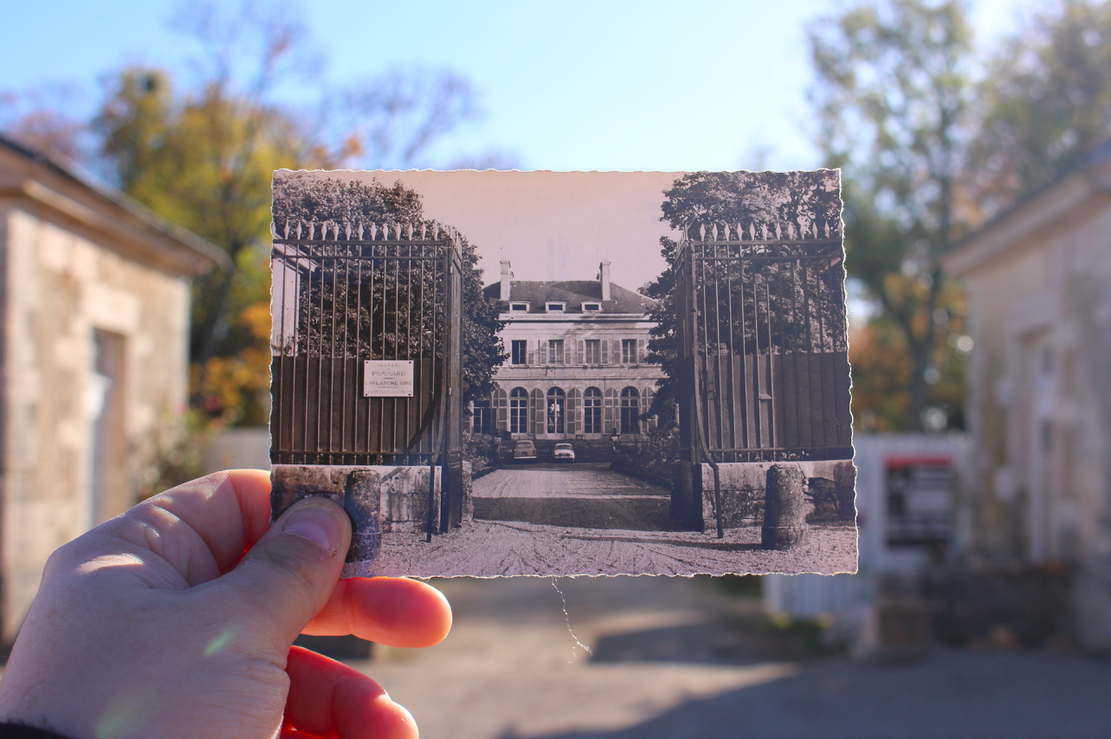
Located parallel to the D973, a stone’s throw from the Route des Grands Crus, the iron entrance gates of Château Marey-Monge are an imposing sight and have been for two centuries. Circa 1960.
Château Marey-Monge, rear

Melting deliciously into Clos Marey-Monge, the large garden of Château Marey-Monge once contained a lake and wooden path ways. Today, a grove of large imposing redwoods and cedars ensure the stately house remains invisible from the outside world. In Summer, at least. Circa 1880.
Château Micault, front

A large English Garden and gravel pathways were once located in the front of Château Micault (known as Château Marey-Monge before the second châteaux was built in 1802), but that was torn out and replaced by vines in the 1960s by the Laplanche family. Large redwood trees once lined the path that connected the two châteaux together. Circa 1880.
Rue Marey-Monge
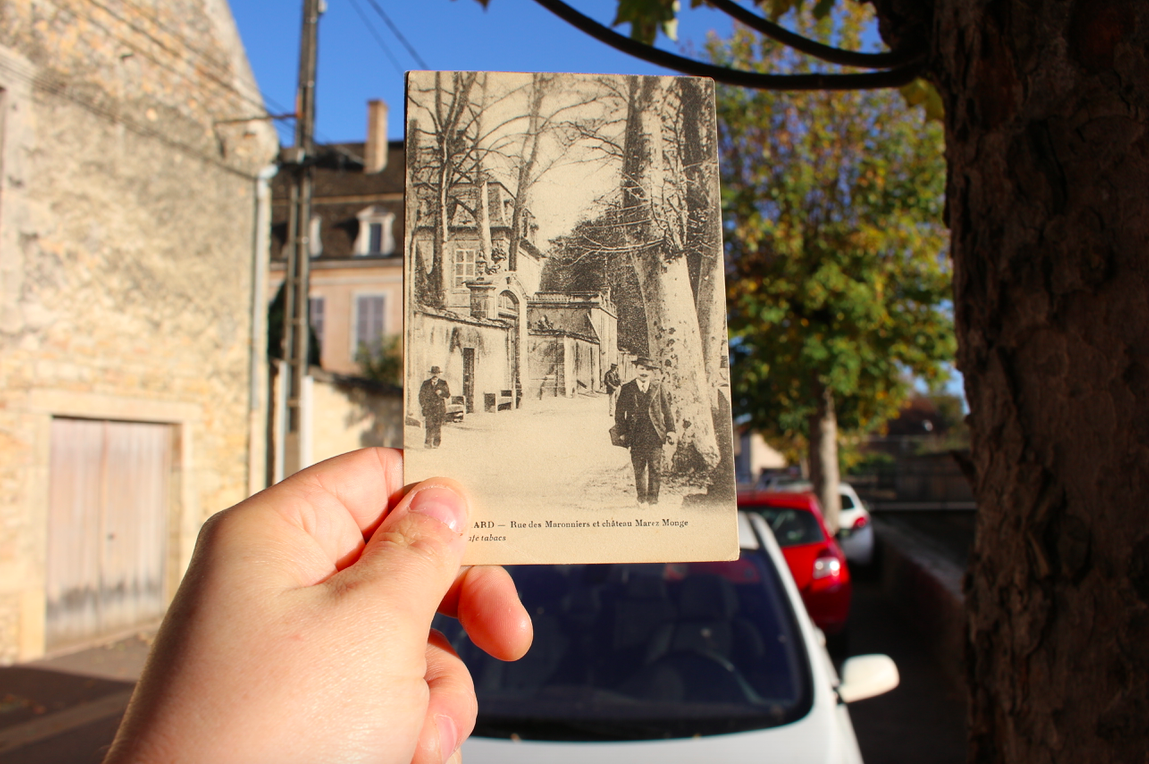
Known in the 18th and 19th centuries as Rue des Maronniers, today, Rue Marey-Monge is the road that runs parallel to our front entrance, and the Dheune stream, and connects the D974 and D973 – the two main arteries that run through the village. Circa 1860.
Grande Rue, D973
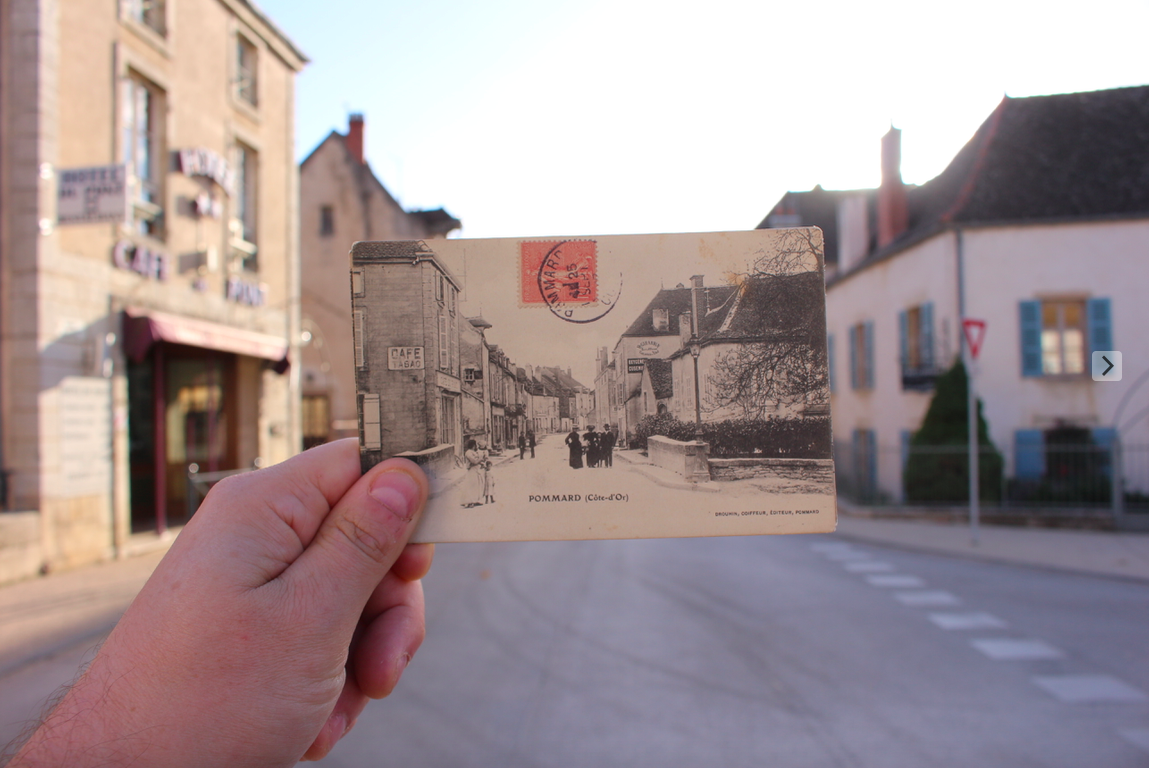
Pommard’s main high street splits at a crossroad in the middle of the village. The crossroad is where you’ll find the historic Café du Pont (which straddles the Dheune stream) ; Appellation du Chocolat ; Calabria pizza restaurant and wine bar La Compagnie Fanny. Circa 1770.
Grande Rue, D973

Pommard’s main road has transformed a few times over the centuries, with tabacs and cafés coming and going. One thing has remained the same – the blue skies in Summer. Circa 1820.
Corner of Church Square

The house with the one eye, as we call it, is now the home of winemakers Serge and Vincent Lahaye in the corner of Church Square, or le Coin de la Place de l’Eglise.
Rue Notre Dame
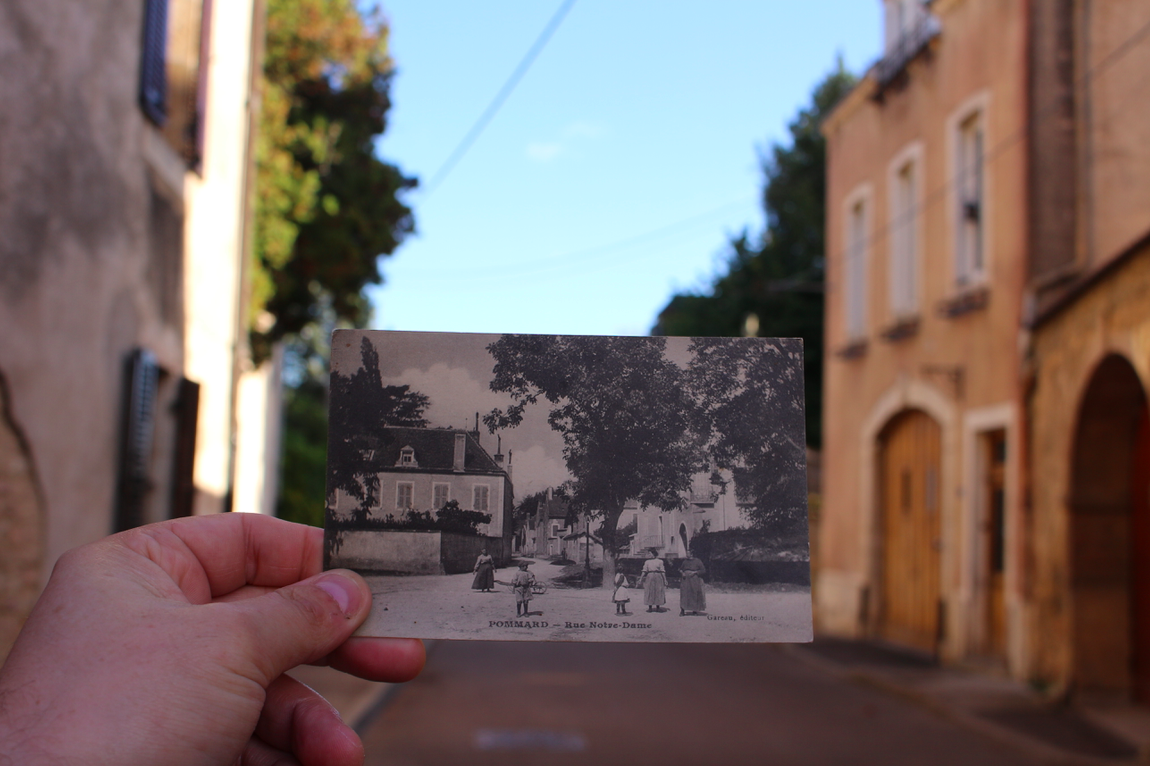
A beautiful street that is home to much Pommard history. If walls could talk! Circa 1770.
Church Square
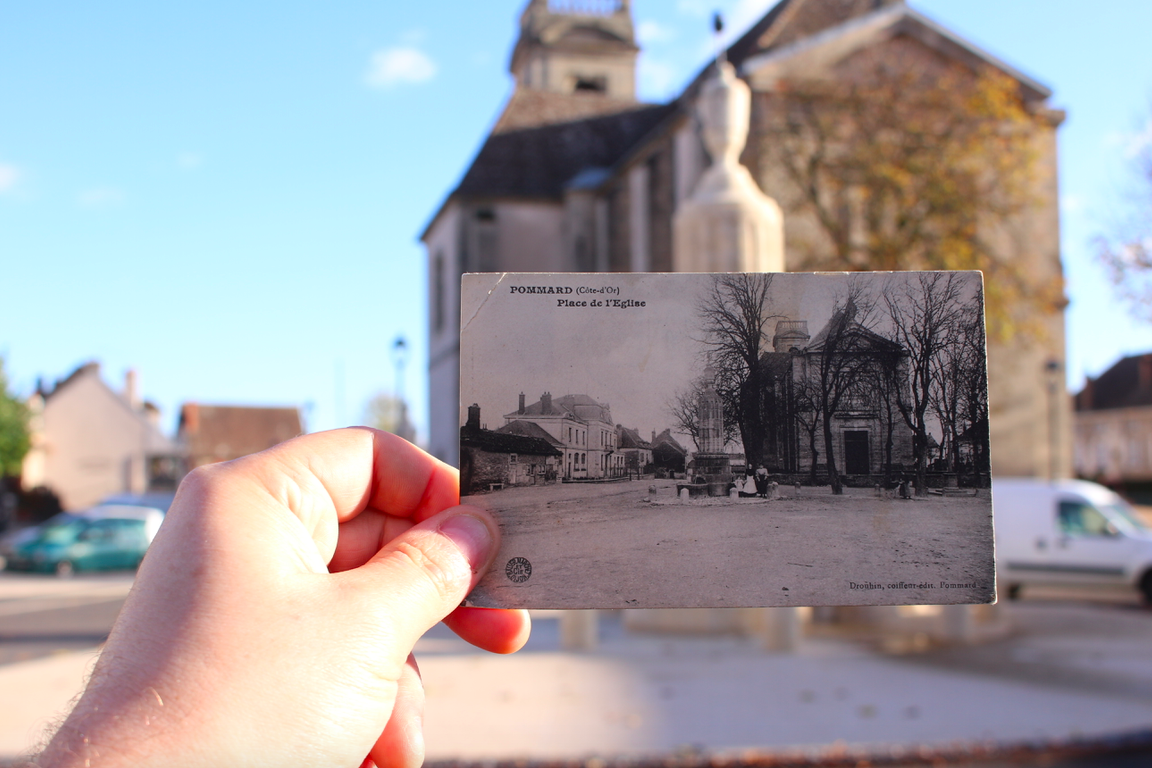
Pommard’s central meeting place, just outside the Church, has seen a lot of history pass through it. The Church was burnt down by heretics in 1794. Much of the Micault family history, part of the Church’s records, was lost to the flames. Circa 1770.
Artichoke Fountain Monument
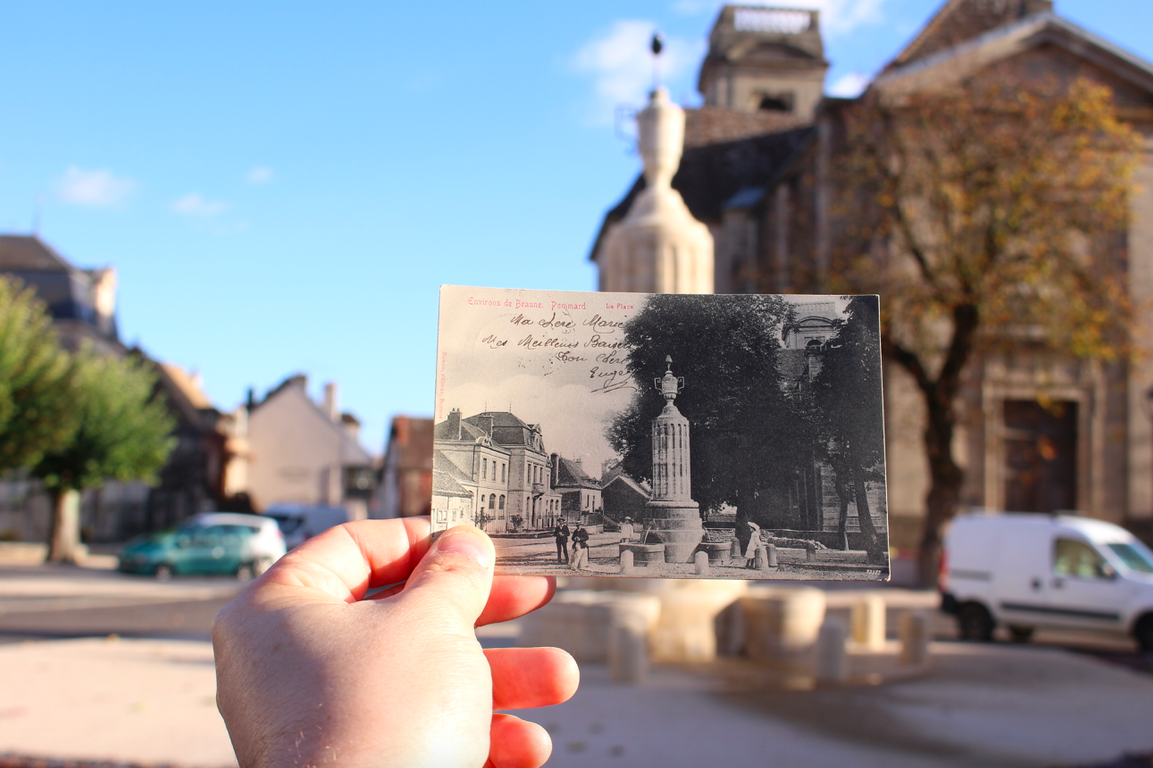
Built in 1806, the village’s central monument is the Artichoke Fountain, or la Fontaine de l’Artichaut, so named because the top of the landmark looks a lot like the vegetable in question. Circa 1770.
The monument was restored in 2016.
The Mayor’s Office and School

Pommard’s school and the Mayor’s Office are attached to the Bailliage de Pommard. The location of the annual January festival of the Brotherhood of Pommard, established in 1981. Circa 1800.
The brotherhood seeks to celebrate the wines of Pommard as well as those winemakers and wine lovers who protect and preserve the traditions of Burgundian winemaking.
Route d’Ivry

Straddling the Dheune stream, which runs parallel to Château de Pommard ; and naturally cools our cellars, flows down from the “Montagnes de Pommard”, created by intense geological behavior 150 million years ago. Circa 1850.